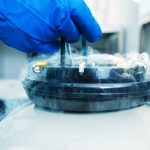About Fertility
Transfer of Cryopreserved Embryos is Safe and Highly Effective

Many couples are wary of using cryopreserved embryos believing that there are increased risks of health to the child and lower chance of a successful pregnancy. However, transfer of cryopreserved embryos is safe and highly effective in helping couples achieve a successful pregnancy. Numerous studies performed in the last few years and an analysis of our own internal data has shown that pregnancy rates using cryopreserved embryos are equal to and perhaps higher than using fresh embryos. In women under the age of 35, embryo transfer rates approach 55 to 60% even when transferring a single embryo. For women between 35 and 38 pregnancy rates to approach 50% with the transfer of one or two embryos.
There are a number of situations when patients have to have all their embryos cryopreserved despite entering a cycle where they expected to have a fresh embryo transfer. In cases where the patients Estradiol is very high or over 20 eggs are obtained, we will often freeze all the embryos to significantly lower the risk of ovarian hyperstimulation syndrome. This is syndrome where the ovaries become extremely enlarged and women accumulate fluid in their abdomen. By freezing the embryos and not putting an embryo into the uterus, the risk of this occurring is significantly decreased. Also, if the patients progesterone level is elevated prior to the egg retrieval, we have found that implantation rates are decreased.
An important part of successful pregnancies is being sure that the embryo and the lining of the uterus are synchronized. In cases where the progesterone rises, the endometrium prematurely matures and will not be at the right phase when the embryo would implant. Therefore, in cases when the progesterone rises and we are worried about an overly mature endometrium, we will freeze all the embryos.
In both of these situations, patients are often disappointed that the embryos are cryopreserved and they have to wait a month prior to the transfer. However, in reality these patients have a very high chance of implantation and ongoing pregnancy. Nearly, 100% of these blastocysts survive the thaw, and are healthy for transfer. In addition the use of cryopreserved embryos has not been found to be associated with an increased risk of malformations. In fact, studies performed overs the last few years have revealed a lower chance of malformation in the offspring when cryopreserved embryos are utilized than if the couple conceived on their own.
If you have questions, please contact us. We are here to help.


